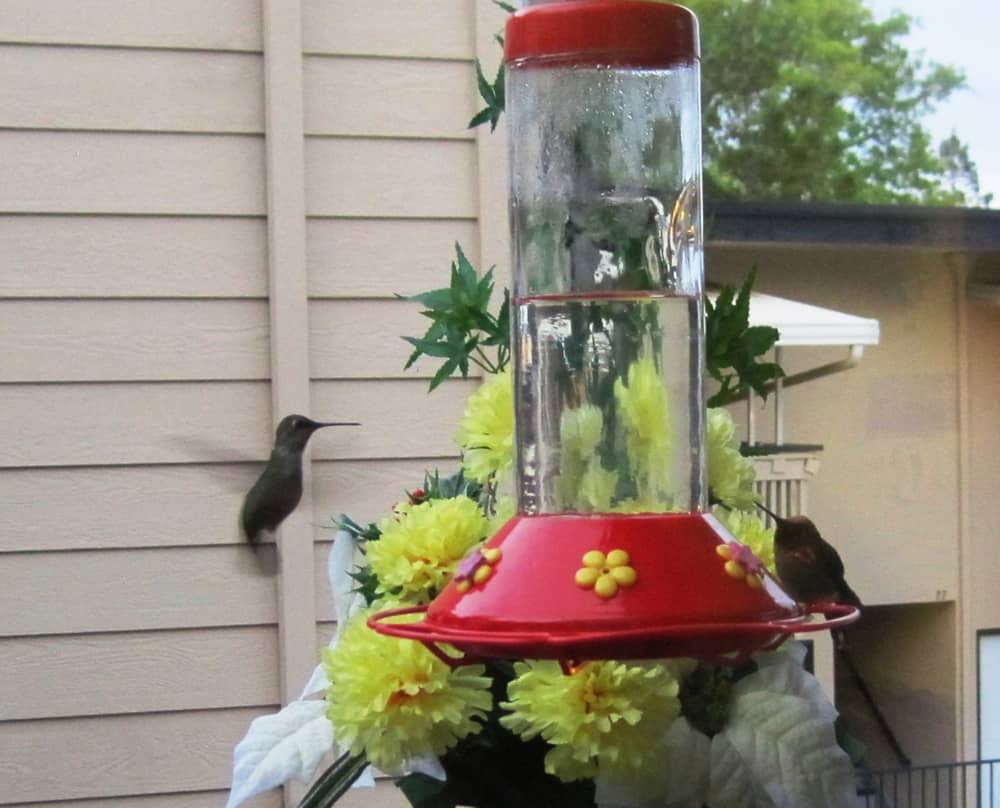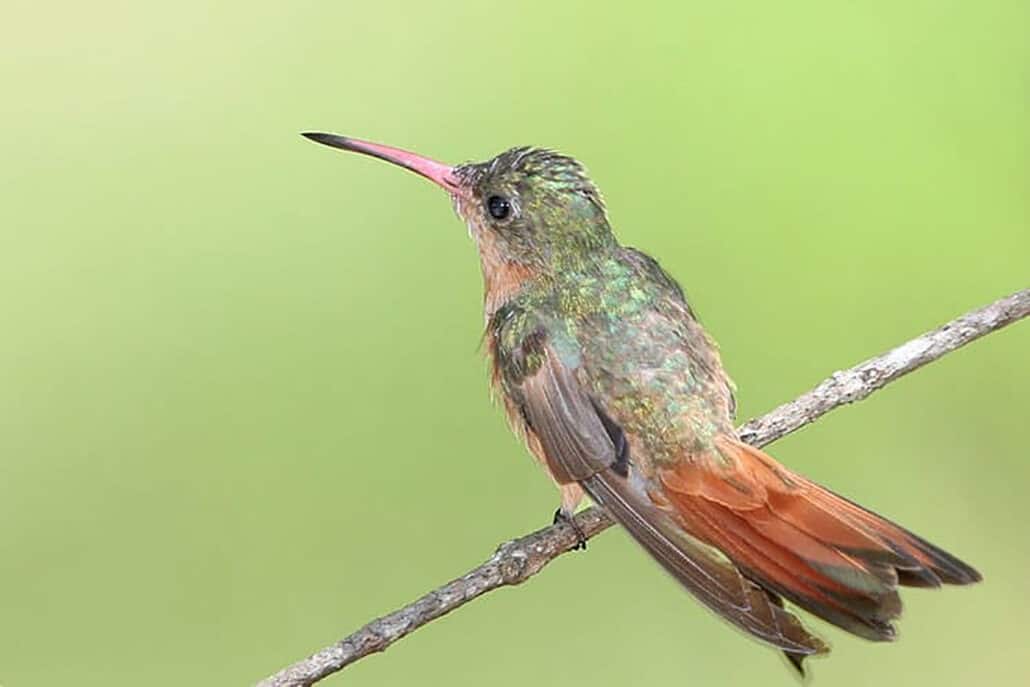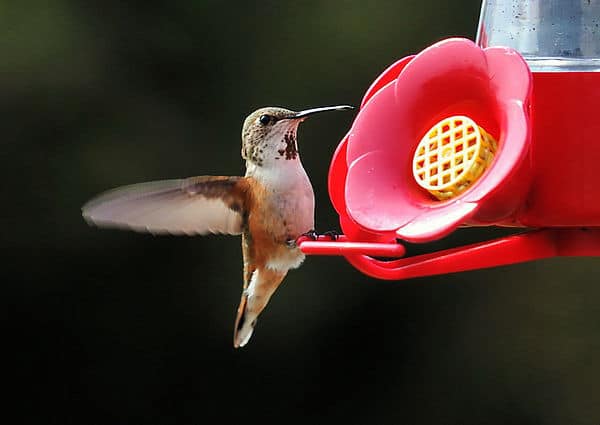General Info
The hummingbird family, Trochilidae, occurs only in the Western Hemisphere, where it is second only to the tyrant flycatchers in number of species. The 328 hummingbird species presently recognized are considerably more diverse in size, color patterns, and lifestyle than are the 20-plus hummer species recorded in North America north of Mexico.
Ornithologists who study the evolution of birds believe that hummingbirds originated in the northern Andes Mountains of South America, where their ancestors were insect-eating, swift-like birds. One or more hummingbird species can be found in nearly every habitat in the New World, except for the polar regions and mountains with permanent ice cover. Colombia,
Ecuador, and Peru all boast of being home to more than 100 species. This number decreases as one goes north or south from the equator. Costa Rica has recorded about 50 species. Sixteen species are known to have bred in the United States, although a couple of those probably do not nest within U.S. borders every year.
Hummers are notable for their acrobatic flight capabilities, tiny size, and jewel-like appearance. Flower nectar is a major part of the hummingbird’s diet. While consuming nectar, a hummingbird also collects pollen from one flower and deposits it on the reproductive parts of the next flower, thus providing the plant with a means of reproducing. Throughout the Americas, many flowers are adapted for hummer pollination.
Hummingbirds do not live by nectar alone. They also eat small flying insects, which they catch by darting about within a swarm or by sallying out from a perch. Insects provide protein, vitamins, and minerals that are an essential part of the hummer’s diet.
Throughout the hummingbird family, breeding systems follow just a few distinct patterns. Many North American species rely on spectacular stylized display flights that trace a “J,” a “U,” or an “O” in the air. Often their flights are oriented to permit the male to catch sunlight with his splendid iridescent throat feathers, or gorget, to impress a nearby female.
Other species add song to the display. Hummer songs are not usually a lilting melody, but rather a few strident, scratchy notes given from a perch. Of the widely distributed North American species, Anna’s hummingbirds are the best-known songsters, whereas the little-studied buff-bellied hummingbird has the song most pleasing to the human ear.
Nesting
In most hummer species, the female initiates nest construction, then seeks a mate from among nearby territorial males. She gathers materials—plant down, grasses, bits of lichen—from the surrounding area. Spider webbing or sticky silk from cocoons latches the structure to the chosen site and binds the other materials together. The nest must be warm and durable to protect the hatchlings.
No pair bond is formed beyond the act of copulation. Incubation and care of the young are done exclusively by the female, while the male continues to court as many consorts as possible.
After mating, the female concentrates her efforts on the eggs and young. Each egg is about the size of a navy bean, and two eggs are a complete clutch. Usually there is a two-day interval between the laying of the first egg and the second. Occasionally nests are found to contain three eggs, but these are thought to be the work of two females. This may happen if a nest is destroyed after its owner has mated, forcing the “homeless” female to dump one of her eggs into a neighbor’s nest.
Incubation begins when the second egg is laid. The young hatch naked, blind, and helpless after a 12 to 15-day period during which the female leaves only to eat. At first, the hatchlings are brooded frequently and fed a diet of nectar, minute insects, and spiders. Protein accounts for about nine percent of the nestlings’ food, three times the amount required by adult hummers.
Nourished with high-protein foods and tender maternal care, the young birds grow rapidly and are ready to leave the nest in a little more than three weeks. At that point they are fully feathered and almost the same size as the adults. The female continues to feed the newly fledged youngsters for a week or so, but after that they are considered competitors and are chased out of the natal territory.
Young hummers of both sexes resemble the female. In a few species, such as broad-billed, magnificent, and blue-throated, characteristic male plumage emerges with the first full set of feathers. For most other species the fledglings migrate to their wintering grounds, and remain in their plain immature feathers until early spring. The molt into adult plumage is accomplished while the birds are in Mexico and Central America, prior to northward migration in spring.
Migration
Most of the hummers that nest in North America migrate to tropical habitats during the nonbreeding seasons, because regions with icy winters cannot support birds that require nectar and flying insects. Of course, some areas of the United States are temperate enough to provide insects and flowers all year, and these places may have hummingbirds throughout the year.
Most North American hummers can tolerate cold for periods ranging from a few hours to a couple of days as long as there is sufficient food available. They do not ordinarily build quantities of body fat except during migration. Hummers adapt to temporary energy shortages by lowering their body temperatures and metabolic functions. In doing so, they enter a state of torpor in which they appear to be dead, but are actually in a trancelike state. Arousal from torpor usually requires 30 minutes or more until body temperature returns to normal.




